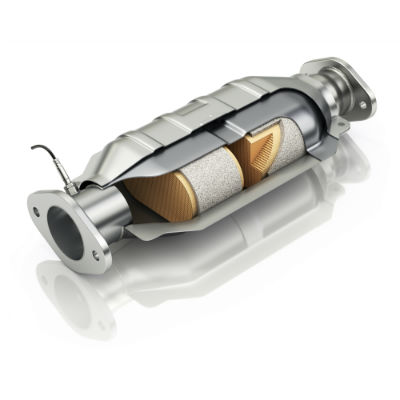
If I’m to take an educated guess, I’d say that most of us are quite conversant with almost every part of our vehicles, right? But unfortunately, there are still some who have little knowledge about some of the vital parts of a vehicle. For those in this category, the term “catalytic converter” might sound like a whole new word. However, regardless of whether you are hearing it for the first time or you’re already familiar with it, we’ll like to intimate you or re-intimate you with that which is a very crucial part of your car.
But before we go further, for the benefit of those who might be hearing this (catalytic converter) for this first time, we will like to tell in brief what this device is? Where is it located in our cars? And its function as well as importance.
What is a catalytic converter?
Catalytic converter is a device in a car that removes toxic substances within the exhaust system, preventing these dangerous substances from getting emitted into the environment. Without this device, more of the air that we breath in would be filled with harmful, dangerous substances that are dangerous to the health, thereby reducing the habitability of our environment to man, animals, and even the green plants.
Where is it located in a car?
As a vital part of a car exhaust system, catalytic converter is located between the engine and the muffler.
This device performs a pivotal function of converting carbon monoxide, hydrocarbons and oxides of nitrogen which are released from the engine exhaust into nitrogen, carbon dioxide, and water.
Cost of a failed catalytic converter
This part of the exhaust system of a car is one of the most costly parts to replace because it is made up of valuable metals like rhodium, platinum, and palladium.
If it fails, you may start experiencing problems, such as increased fuel consumption, poor acceleration, and at the utmost worst, it makes your car a functioning but deadly cancer merchant.
Regardless of your model and make, a dead catalytic converter can be really expensive to replace or repair.
But it is good news for you to know that this device can even outlast the entire lifespan of your car, and can even be recycled upon scraping of the car if properly taken good care of.
In order for you to be able to take very good care of this valuable device in your car, and more importantly to save you the cost of time, energy and money of facing the problems of a failed Catalytic Converter, we handout to you the following useful tips to clean catalytic converter, while also keeping it in good condition.
- Always use standard grade fuel and such other lubricants as approved and recommended by your car’s manufacturer because using low-grade fuel and lubricants can result in reducing converter performance.
- When driving through an uneven road, you are advised to drive with more care as to avoid hitting the converter against the ground or bump because its body is fragile and can be easily shattered and damaged upon a hard knock.
- For fire hazard warning, always check your injector nozzles for clogs; which can result in malfunctioning. This can actually lead to unburnt fuel passing to the converter and then burn in it, causing massive damage to the converter or even set your car ablaze.
- Trying as much as possible to avoid driving through a pool or puddle of water because catalytic converter operates at very high temperature and when it comes in contact with water then it cools and contracts speedily which can lead to breaking substrate.
- An experience of acceleration coming off while you are on the mileage of more than 50, 000km is a clear indication of failing catalytic converter and you’ll need an expert converter washing for this.
- When servicing your car, it is very crucial that you always check the converter so as to detect whether it’s making unusual sounds or noises, or if it has a crack on its shell and particles in the exhaust. If you spot these, then you might need to replace your converter.
Conclusively, in a case that all efforts fail and so you found yourself to have gotten spoilt or damaged converter and so you need replacement, you can still rake up some money from the one you’re replacing by selling it to a converter-recycling company as this device is made up of substances that are used in making jewelry as we’ve earlier listed them, instead of selling it to a regular scrap collector who would buy it cheaper.
With all these token advises, hints and tips we’ve given so far, We want to believe that we’ve made justice to the topic and more importantly the purpose of this write up, as we’ve tried in our own little way to guide you on How You Can Preserve Your Catalytic Converter To Avoid Costly Repair.
Uday Tank has been working with writing challenged clients for several years. His educational background in family science and journalism has given him a broad base from which to approach many topics. He especially enjoys writing content after researching and analyzing different resources whether they are books, articles or online stuff.










